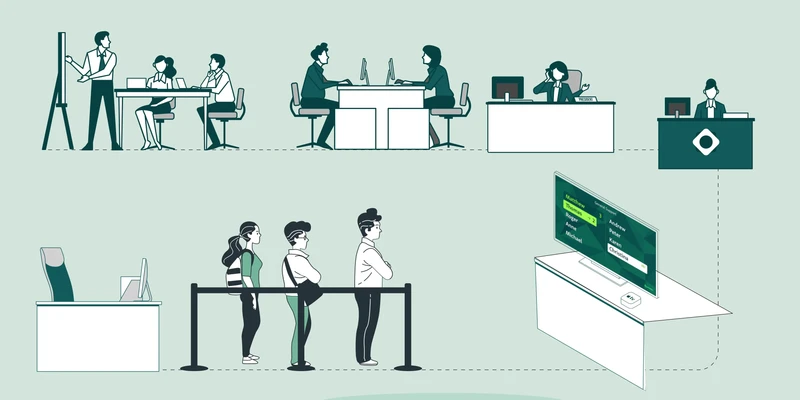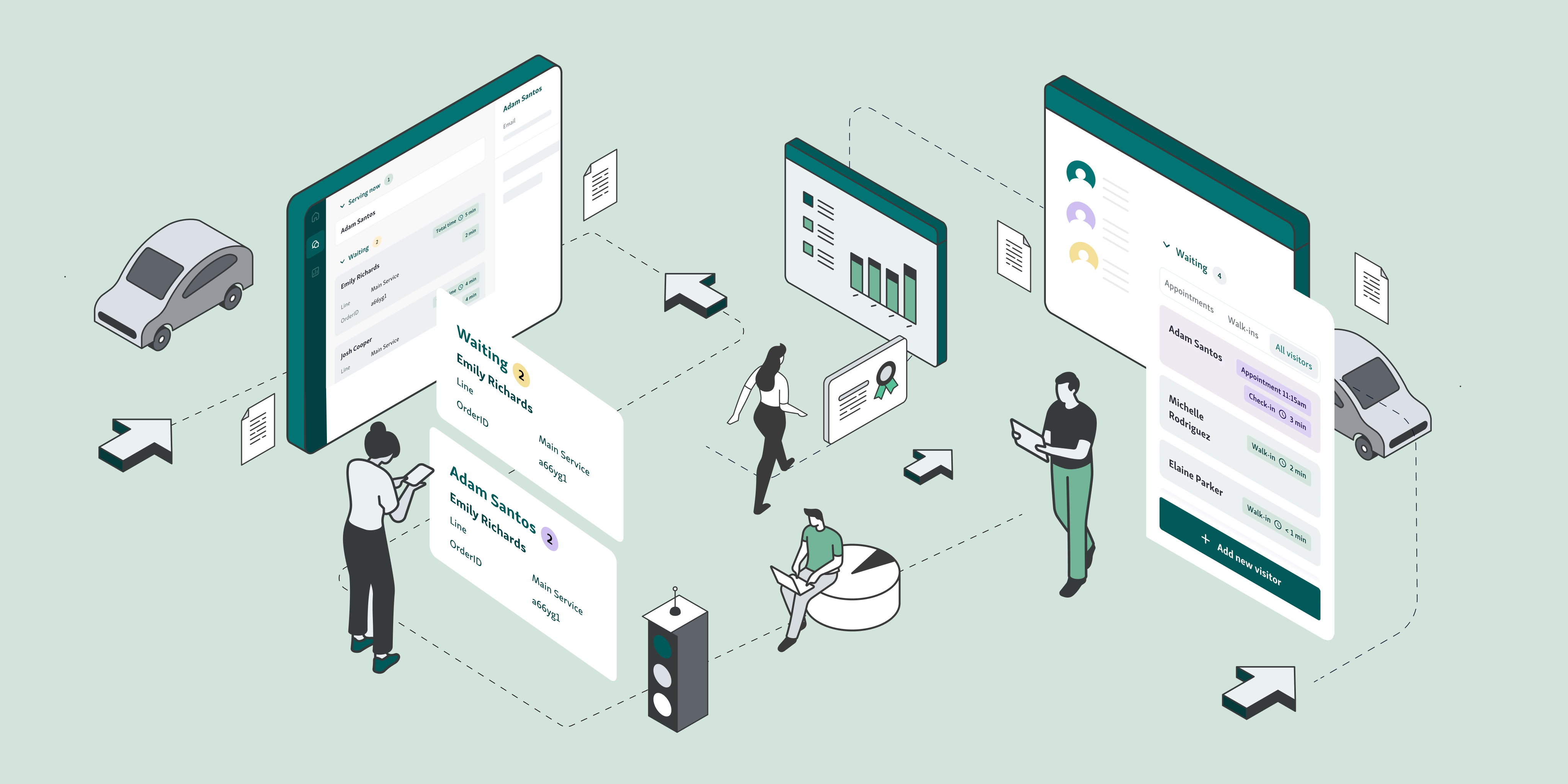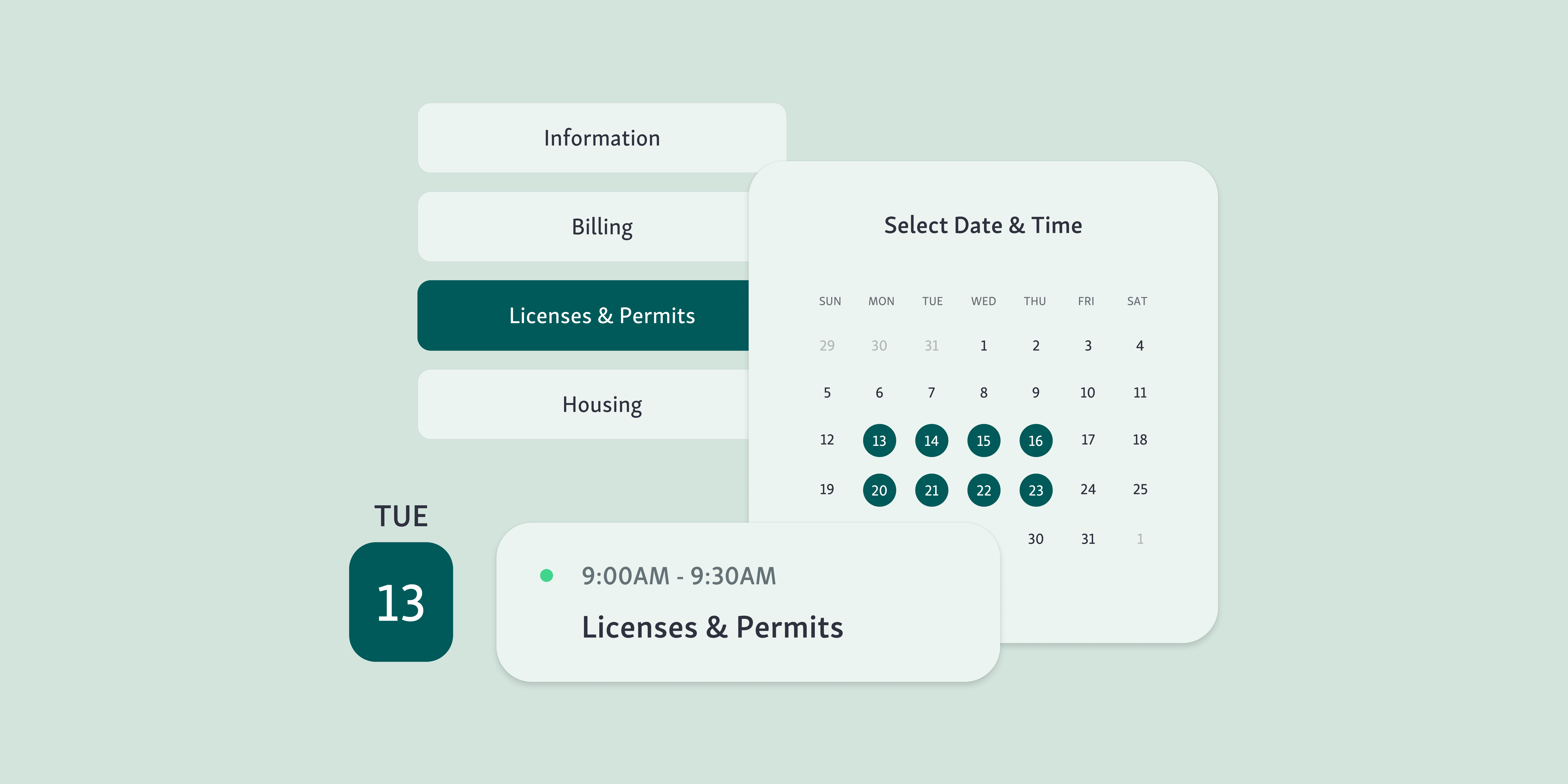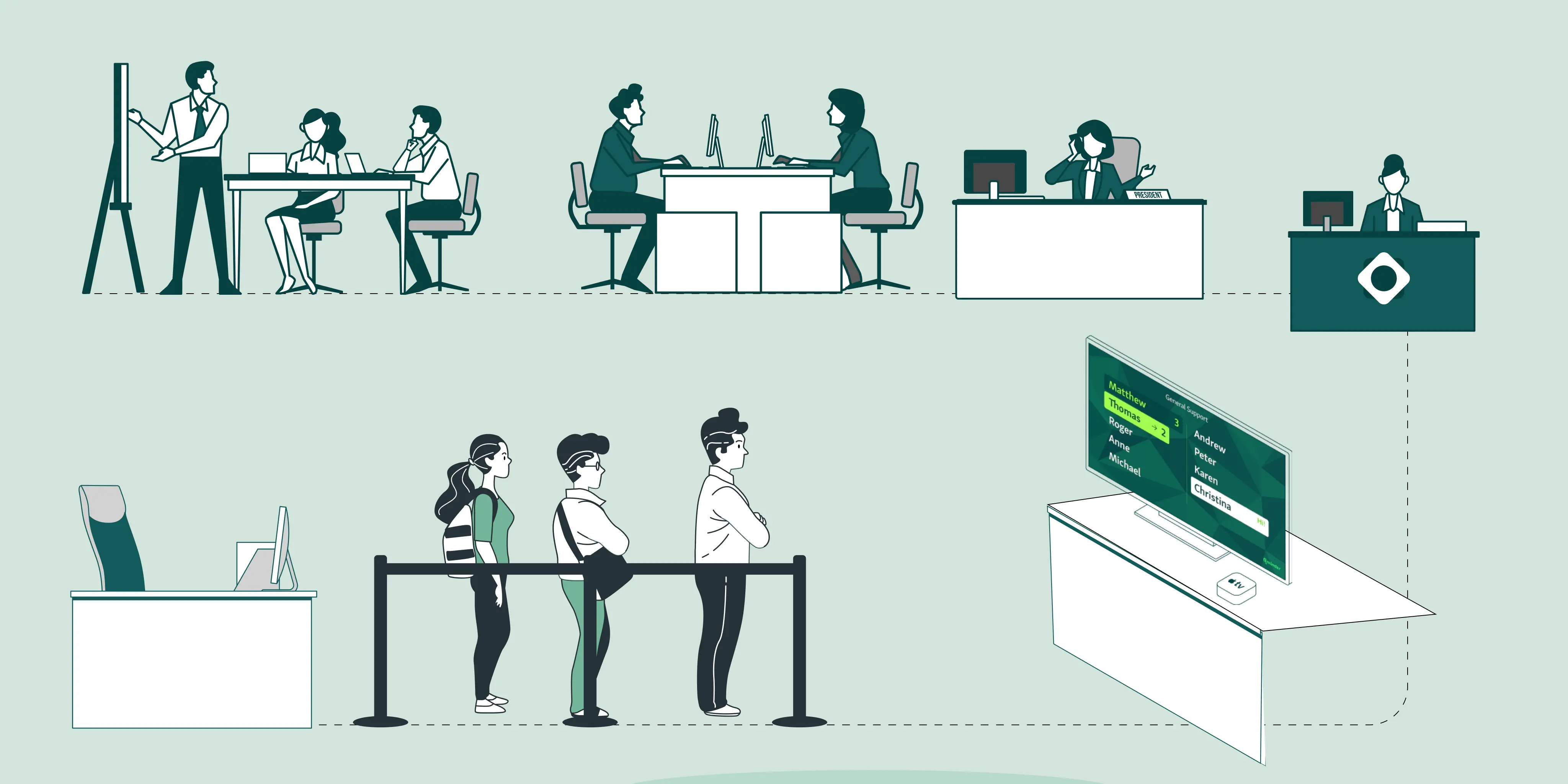Handling large volumes of walk-ins is a daily reality for local government agencies — whether its residents renewing permits, applying for assistance, or resolving court-related matters.
These unstructured visits often lead to long queues, overwhelmed front desks, and frustrated citizens. The pressure falls heavily on administrative staff, who must juggle unpredictable foot traffic with limited resources and mounting paperwork.
But it doesn’t have to be this way. Appointment scheduling software offers a practical solution by replacing reactive workflows with structured, pre-planned visits. The result? A streamlined, calmer work environment and more efficient service delivery.
In this blog, we’ll explore how appointment scheduling directly reduces administrative burden and improves day-to-day operations for local governments.
How Appointment Scheduling Software Works
Appointment scheduling tools streamline operations by letting citizens reserve service times online — eliminating the chaos of walk-in traffic. Core features like real-time availability, automated reminders, and service-specific time slots help reduce no-shows and prepare staff more effectively.
Agencies can set up different booking flows for departments like permitting, licensing, or public health, all while gathering useful data for planning.
Many systems also integrate with existing government software to provide a smooth, end-to-end experience from booking to service delivery.
Key Features:
Online self-booking with real-time updates
SMS/email reminders to cut down no-shows
Service-specific appointment slots
Multi-location and multi-department flexibility
Integration with CRM, permitting, and case systems
How Appointment Scheduling Eases Admin Overload
Appointment scheduling software helps shift that burden by automating key parts of the process and giving both staff and citizens more control and clarity. Here are some of the ways:
1. Online Bookings
By allowing citizens to book appointments online, appointment scheduling software removes the administrative burden of manually handling appointments. With online bookings, citizens can choose the time that works best for them, receive confirmation, and even reschedule or cancel if necessary—all without any intervention from staff.

This system not only reduces the risk of overbookings and scheduling errors but also optimizes time management for both citizens and government employees.
How this helps reduce admin overload:
Less phone traffic: No more answering calls for simple appointment bookings.
Fewer administrative errors: Automated confirmations reduce the likelihood of missed or double-booked appointments.
Easy scheduling adjustments: Staff can focus on more urgent matters instead of handling last-minute changes.
With tools like Qminder, online bookings are seamless, integrating directly into staff workflows and ensuring smooth, efficient scheduling without the extra workload.
2. Pre-Visit Data Collection
One of the most efficient ways to streamline operations is by having citizens enter their information online before arriving. This eliminates the need for in-person data entry, reducing wait times and administrative tasks.
By collecting necessary details like identification, purpose of visit, and required documentation beforehand, staff can focus directly on providing services rather than handling basic administrative duties.
How this helps reduce admin overload:
Saves time at check-in: Visitors provide their data upfront, so they spend less time at the counter.
Reduces clerical errors: Automatic data input minimizes human error.
Speeds up the process: Employees can access pre-filled information immediately, accelerating service delivery.
Qminder supports this by offering custom forms that visitors complete ahead of their appointment, ensuring a smoother, more efficient experience for both citizens and staff.
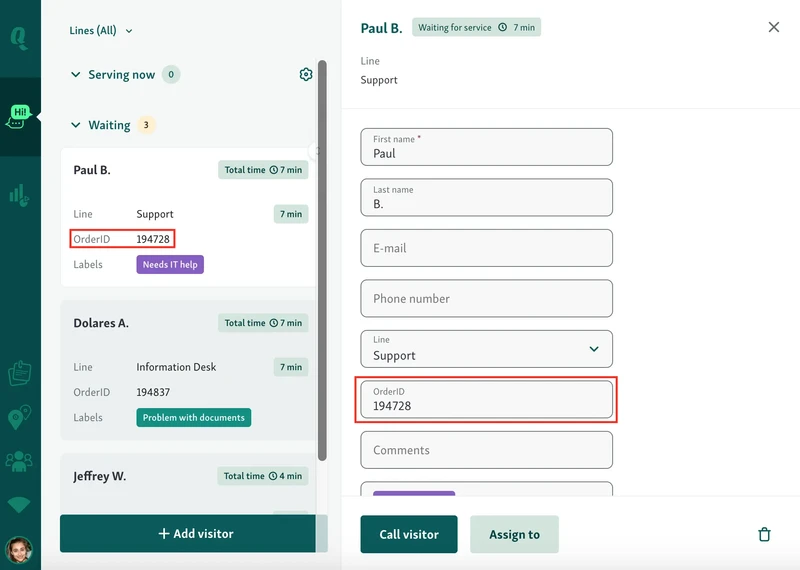
3. Clear Daily Workflows
When appointments are pre-scheduled, administrative teams gain a clear view of the day's tasks, allowing them to better structure and prepare for the influx of visitors. This organization eliminates the uncertainty of walk-ins, reducing the chances of missed or overlapping appointments.
Staff can allocate resources efficiently, and ensure that each department is ready for the scheduled tasks. A predictable daily workflow prevents disruptions and allows teams to focus on serving citizens more effectively.
How this helps reduce admin overload:
Predictable workflow: No surprises, and staff knows what to expect.
Optimized resource allocation: Ensure staff and resources are allocated where they’re most needed.
Fewer disruptions: Reduce the risk of last-minute changes or interruptions.
You might also like - How Service Intelligence Helps You Run a Smarter Business
4. Fewer Interruptions
By spacing out appointments, local government staff experience fewer disruptions throughout the day, allowing them to maintain focus and deliver quality service. Without constant walk-ins, employees can concentrate on the tasks at hand, reducing stress and increasing productivity.
This structured approach helps minimize distractions and ensures that each visitor is seen at the designated time. With fewer last-minute changes, staff can prepare better and provide more effective assistance to citizens.
How this helps reduce admin overload:
Reduced distractions: Staff can focus on their tasks without constant interruptions.
Efficient service delivery: Better preparedness for the day’s scheduled appointments.
Improved morale: Less stress for staff, resulting in better productivity.
5. Integrated Reminders
Appointment scheduling systems with integrated reminders automatically send confirmation messages and alerts to citizens, helping to reduce no-shows and the need for rescheduling calls.
These reminders ensure that visitors are prepared for their scheduled appointment time, leading to fewer last-minute cancellations and a more organized schedule. This proactive approach minimizes administrative effort and boosts efficiency.
How this helps reduce admin overload:
Less manual follow-up: Automated reminders reduce the need for staff to call to confirm or reschedule appointments.
Fewer no-shows: Increased citizen compliance with scheduled times.
Streamlined scheduling: Helps maintain a full, efficient schedule with minimal disruption.
Tools like Qminder ensure that reminders are sent automatically, reducing administrative burden and improving appointment attendance.
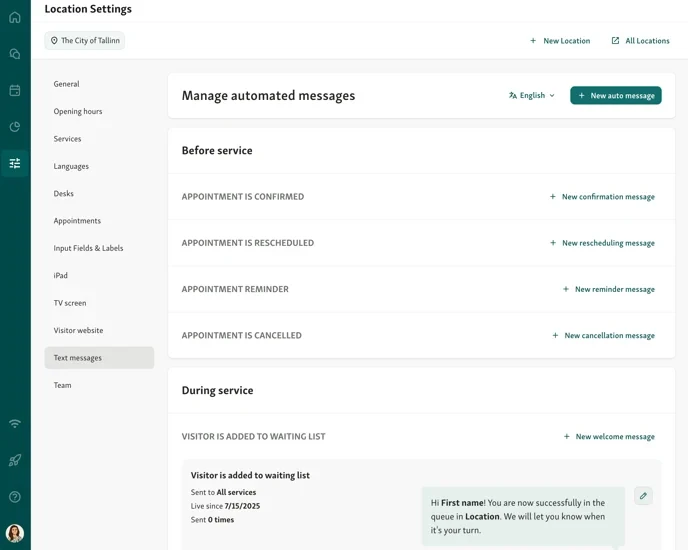
6. Improved Queue Management
Traditional walk-in systems often create bottlenecks, with staff manually managing lines and waiting areas. With appointment scheduling software, queues are digitized—allowing staff to monitor foot traffic, control flow, and reduce crowding in real time.
Instead of reacting to unpredictable volumes, teams can proactively plan and guide citizens based on appointment data.
How this helps reduce admin overload:
Digital check-ins reduce front desk pressure
Real-time visibility into visitor volume
Less time spent directing and managing waiting areas
An appointment queue software can enhance this process with real-time queue visibility and intuitive traffic management tools, helping government teams stay organized and efficient.
Also read - The Benefits of Appointment Scheduling Software in DMV and City Hall
7. Reduced Follow-Up Work
When appointments are scheduled and tracked digitally, administrative staff can rely on a clear, organized history of each citizen interaction.
This simplifies post-visit documentation, reduces the need to chase missing details, and makes reporting much faster. Instead of piecing together notes from different sources, everything is logged in one place.
How this helps reduce admin workload:
Automatic records of visit dates, times, and services
Easier reporting and audit preparation
Minimized manual data entry after visits

Real-World Examples & Case Studies
See how real local governments are using appointment and queue management tools like Qminder to reduce admin burden and improve service delivery.
1. Okaloosa County Clerk of Court, Florida
The Challenge: High Foot Traffic & Unpredictable Service Demands
Okaloosa County’s courthouse dealt with hundreds of citizens daily, each needing different services—from traffic tickets to passport applications. Staff were stretched thin managing walk-ins, answering inquiries, and trying to maintain order.
The Solution: A Structured, Digital Queuing System
With Qminder, Okaloosa replaced chaotic walk-ins with a digital system offering remote check-in, kiosks, waitroom displays, and clear appointment segmentation.
Admin impact:
Staff no longer had to manually direct visitors or field basic service questions.
Real-time updates reduced unnecessary follow-up.
Clerks could prepare for each case in advance based on pre-selected service types.
Result: A Manageable Daily Workflow
The system gave the team a visual queue of who’s coming in, for what, and when. This made it easier to assign tasks, allocate clerks, and plan ahead without burnout.
Benefits:
Fewer interruptions meant deeper focus on individual cases
Staff time was no longer wasted managing physical lines
Improved ability to track performance and workload trends via analytics
2. City of Greensboro, North Carolina
The Challenge: Unstructured Walk-Ins and Administrative Overload
Greensboro previously relied on a basic receptionist-led check-in process. This often caused congestion, manual direction, and high employee strain. The pandemic only made things worse, highlighting the need to reduce in-person interaction and streamline operations.
The Solution: A Digital, Self-Service Queue System
By implementing Qminder, Greensboro introduced remote sign-ins, kiosk-based check-ins, and digital waitlist displays—minimizing person-to-person interactions and manual coordination.
Administrative relief:
Fewer interruptions for front-desk staff
No more manual queue control or repeated instructions
Citizens could self-serve and complete pre-visit forms remotely
Efficient Communication & Data Capture
Qminder’s two-way texting feature allowed for seamless updates and service instructions. Visitors could fill out forms remotely, reducing paperwork at the desk.
Impact on staff time:
Staff accessed visitor info before face-to-face interaction
Text-based updates reduced phone calls and walk-up questions
Workflows became more predictive, less reactive
Make Admin Work Lighter—One Appointment at a Time
Managing the daily flow of citizens in local government offices doesn’t have to drain staff time and energy. Appointment scheduling software streamlines operations by automating bookings, collecting pre-visit information, and providing structured workflows that reduce walk-in chaos.
Real-world examples like Okaloosa County and the City of Greensboro show how tech-driven solutions can create smoother, faster, and more efficient service environments.
If you’re ready to ease administrative pressure and improve citizen satisfaction, Qminder offers a complete appointment and queue management solution built for public sector needs. Learn more about the automated scheduling benefits that can transform your agency’s operations.
Most government-grade appointment systems use encryption, role-based access, and compliance with data protection regulations (like HIPAA or GDPR) to keep sensitive data secure.
Very little—cloud-based tools are maintained by the provider. Updates are automatic, and support is usually available via chat, email, or phone.
Look for features like compliance, ease of use, scalability, integration capabilities, and a proven track record in the public sector.

